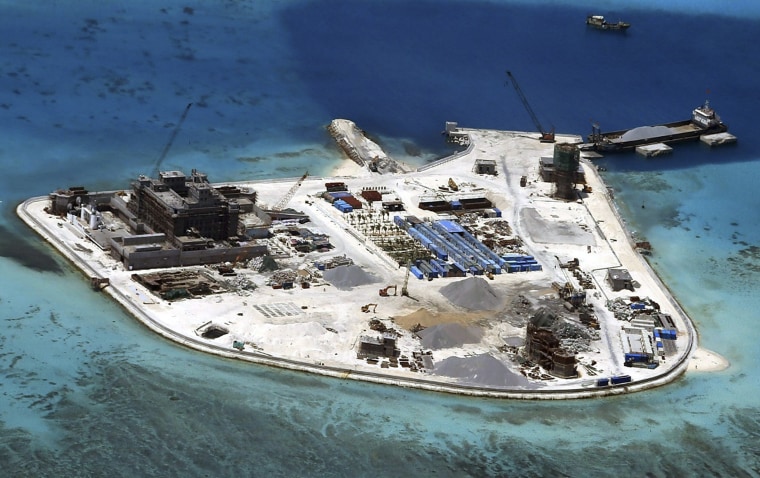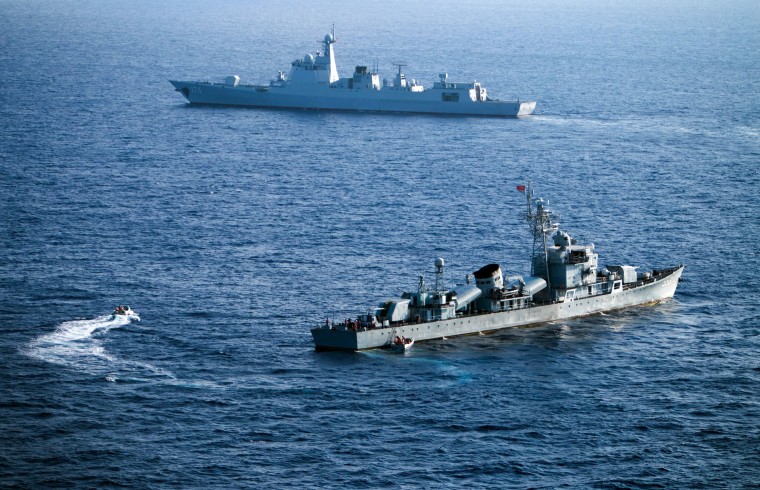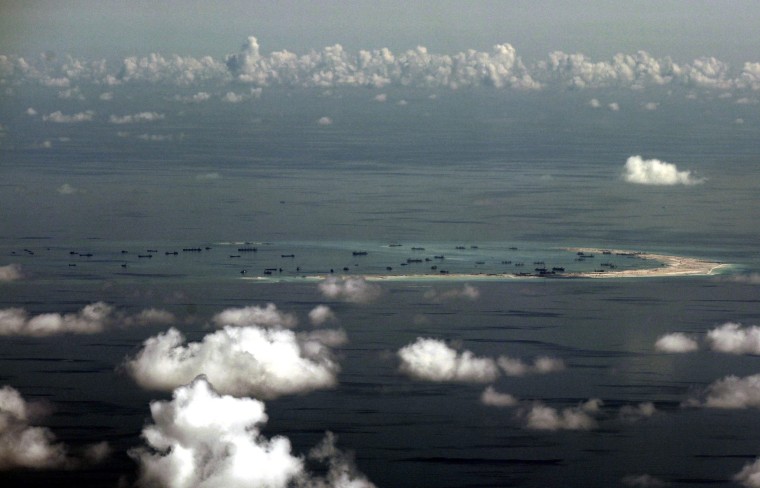BEIJING — An international tribunal delivered a searing rebuke to China on Tuesday, ruling that the country has no legal basis to declare historical rights in the South China Sea.
While the ruling was crystal clear, what happens next is anything but.
Why is the ruling such a big deal?
The landmark case was brought to the Permanent Court of Arbitration by the Philippines, one of several countries whose own maritime borders overlap with the massive maritime area staked out by Beijing in the 1940s.

Nothing in Tuesday's ruling went in China’s favor.
The tribunal condemned China for its large-scale land reclamation, aggressive tactics with fishermen and for causing irreparable damage to marine ecosystems with the construction of artificial islands.
It also accused Chinese authorities of knowing its fishermen were harvesting endangered sea turtles and damaging coral reefs.
Beijing dismissed the outcome as "null and void" and has vowed to not recognize an "illegal" verdict — let alone accept it.
What's at stake is less the disputed bits of land than sovereignty over the waters around them.
Shipping lanes in the South China Sea are arguably the busiest waterways on the planet, hosting $5 trillion every year in trade. The area is also believed to be rich in natural resources.
The ruling states that China violated the 1982 United Nations Convention on the Law of the Sea, which details how economic zones of control are drawn around "land features" such as rocks, reefs, or islands that grant rights over natural resources.
The treaty also allows other nations the freedom of navigation and overflight. China is a signatory to the treaty — the U.S. is not.
A Philippine victory — or was it?
While the case was brought by the Philippines, China has long blamed the United States for inflaming the situation through its regional allies.
Paul Reichler, the lawyer who spearheaded the Philippines’ case, claimed the ruling was a "remarkable victory for the Philippines."
The case was filed in 2013, after China seized Scarborough Shoal, a reef 150 miles off the Philippines that is claimed by both countries.

Filipinos took to the streets Tuesday to claim the result as a victory. For days the hashtag #Chexit has made the rounds on social media, meaning China should exit what Filipinos see as their territorial waters.
But it is unclear how far the current Philippine government will go to enforce the ruling.
Manila welcomed the decision but also urged "restraint." The current government is not the same regime that filed the case in 2013, and the new president, Rodrigo Duterte, has expressed interest in attracting Chinese investment.
He has also distanced himself from Washington, proclaiming a month before his June election that his country "will not be dependent on America."
Will the ruling prompt the U.S. to act?
What happens next could strain U.S.-China relations.
Washington could use the decision as a reason to step up naval patrols to show support for the Philippines, despite Duterte's proposed talks with China toward maritime cooperation.
While the U.S. is hesitant to go to war over a scattering of uninhabited islands, there is also concern about ceding the sea to China as it appears on course to militarize the area.

U.S. Director of National Intelligence James Clapper said in March that China would "have significant capacity" to project "substantial military power" in the region by early next year.
Victor Gao, an international affairs analyst and former interpreter for former Chinese leader Deng Xiaoping, agrees.
"China is telling the United States the days when China could be bullied are forever over," he told NBC News. "If the United States can send its warships to the South China Sea, China can do the same — sending them to the Caribbean and to the Gulf of Mexico and to the offshore areas in California."
Gao added: "If the United States does not believe that, wait until it happens and it’ll be too late."
What about China?
China could take any number of steps in wake of the ruling.
It may withdraw from the United Nation Convention on the Law of the Seas treaty, step up its land reclamation, or impose a new "air defense identification zone" that would allow Chinese forces to monitor and move against planes in the area.
The ruling also may prove to be a strong rallying point for Chinese nationalism.
Social media platforms were kinetic with messages that called for unity around the decision.
In the hours ahead of the ruling, #SouthChinaSeaArbitration was the top trending topic on Weibo with well over 100 million views.
The Global Times featured a front-page editorial on the day the ruling was released saying that China’s reaction will depend on outside provocation and that does not rule out the possibility of military confrontation to defend China’s claims and its dignity.
China "has become a formidable competitor that deserves respect," the editorial said, "As long as we stick together, provocateurs are doomed to fail."

